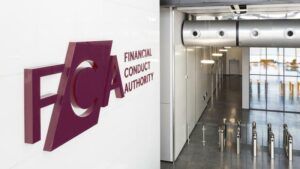Discretionary fund managers (DFMs) have expressed a number of concerns surrounding the current proposals for the outcome of the Sustainability Disclosure Requirements (SDR) and have called on the UK regulator to provide clarity for portfolio management services (PMS), specifically the 90% thresholds to meet the labels and how diversifying assets can be used.
ESG Clarity spoke to a number of DFMs about how managed portfolio services (MPS) and funds of funds could potentially navigate the proposed labels under SDR (see below) amid concerns there could be a vast number of switches in the fund market – and a lot of assets moving around – as fund selectors opt to move to funds that meet the criteria of the labels in order to attain a sustainable label for their own portfolios.
See also: – FCA sustainable fund label proposal nuances hammered out by industry
Proposed labels
- ‘Sustainable focus’ invests mainly in assets that are sustainable for people and/or planet,
- ‘Sustainable improvers’ invests in assets that may not be sustainable now, with an aim to improve their sustainability for people and/or planet over time, and
- ‘Sustainable impact’ invests in solutions to problems affecting people or the planet to achieve real-world impact.
For example, in Europe asset managers have pursued darkest green category – Article 9 under the Sustainable Finance Disclosure Regulation (SFDR) – for a large number of funds in their ranges but this has resulted in confusion around what is regarded as sustainable, greenwashing claims and a large number of downgrades.
Siobhan Archer, sustainable investing specialist at LGT Wealth Management, praised the Financial Conduct Authority (FCA) for coming up with a “non-hierarchical alternative to SFDR” and said the firm “appreciated the forward-looking notion that ESG integration alone was not a qualifying aspect for the sustainable focus label”, but urged the FCA to provide more clarity on DFM portfolios.
See also: – ‘On the naughty step’: Implications of SDR and Consumer Duty for advisers
Threshold is ‘too high’
In the current format it appears that any portfolio that holds funds with a mix of the SDR labels would not itself meet the requirements for a label.
“You can talk about sustainability credentials but you can’t get a label,” said Louisiana Salge, head of sustainability at EQ Investors.
“We have fed back on this point specifically – the threshold is too high.”
The threshold she refers to is in the discussion paper published by the FCA in October 2022, which stated: “Portfolio management services can only use a label if 90% or more of the value of all constituent products in which they invest qualify for the same label.”
This has caused concern for being first, too high, and second, unclear on whether this encompasses assets like cash.
“We need more clarity on certain diversifying assets such as cash – if we are thinking about this practically we need to know what is in and what is out of scope,” said Salge.
LGT Wealth’s Archer said in the firm’s response to the consultation the team “expressed some discomfort” with the threshold pertaining to PMS of 90% of assets needing to be in one category in order to for a label to be applied to a product.
“This could lead to reticence to use the voluntary labels and could create unintended consequences for fund managers not being able to flex portfolio asset allocations to market conditions,” she said.
“Our response also highlighted the need for further clarification as a DFM running a range of multi asset model portfolios, in terms of the usage of labels and the underlying metrics underscoring certain labels.”
She also flagged concerns around cash highlighting last year many DFMs increased their share of cash as a buffer to uncertain market conditions.
“If this were to happen more frequently, this could create an issue for constant compliance with the label’s underlying principles. Therefore we, among many others, asked the FCA to rethink this threshold, potentially lowering it and expecting stronger reporting on unexpected investments to ensure no greenwashing, or requiring fund of fund type services to display the breakdown of constituent labels as well as the percentage of unlabelled constituents.”
Morningstar shared similar concerns in its official response the FCA indicating the 90% threshold could lead to concentration in certain funds and investors ending up in funds not well-suited to their requirements.
“As the proposal stands, some products may have to become more concentrated to achieve a label, with the higher concentration creating higher risk,” the written response said. “Even then, it could transpire that only some of the product options in a given family could achieve a label. As these would likely be the more equity-oriented offerings, it could induce an unintended consequence of leading an ESG-investor to choose an option that is less suited to their personal circumstances.”
It also noted that it is unclear whether portfolios with direct holdings of securities would be able to quality for a label due to the requirement for at least 90% of their assets to be invested in products that each have the same label.
Meanwhile, DFMs also shared some concerns on how fund managers will handle SDR – and the impact on their portfolios as a result.
Patrick Thomas, head of ESG portfolio management at Canaccord Genuity Wealth Management and member of the ESG Clarity Committee, said: “We would not switch based on a label but would have concerns if a fund manager could not meet the criteria for any of these labels as they are fairly broad.
“Furthermore, the disclosure requirements around impact are onerous and might dissuade fund managers from offering these strategies. This would be a bad outcome for investors.”
Fourth label
The DFMs discussed the potential of a fourth “umbrella” label for MPS or funds of funds, which would enable them to simply label these products as ‘sustainable’.
Salge explained: “It makes sense if you can’t get a label because you hold a mixed bag different labels but we would be keen to see a type of umbrella label, which is a suggestion we have put to the FCA.
“It would be a shame if very few MPS could get the label – the outcomes of the FCA consultation would be better if they could get a label.”
Julia Dreblow, founding director of SRI services and member of the ESG Clarity Committee, also explored the idea of a fourth label in her official FCA response.
“The paper would benefit from additional clarity for portfolios. My original interpretation was that portfolios will need to have 90% of their assets in a single sustainability label in order to be use a sustainable label. I understand that that is not the intention as portfolios will be able to use the term ‘sustainable’ if they have a mixture of labels. The 90% rule applies to the use of specific ‘labels’.
“However, this leads to the question of whether there are three – or four – labels? And, so, if a portfolio can have a combination of labels and call itself ‘sustainable’ (which is eminently sensible), could other funds do the same? Ie. Should there be a general ‘sustainable’ label? Many funds currently combine different approaches.”
Salge and Morningstar also backed reducing the 90% threshold.
“I don’t think this would dilute the ambition of SDR in anyway. But it is a bit more close to the reality of how MPS are built,” Salge said.
Morningstar suggested reducing the 90% threshold to 70% parity with other products “would go further”.
It added: “In return, the disclosure obligations on PMS could be expanded a little to provide more information about the sustainability objective, KPIs and investment process, together with the details of underlying labelled products that are used in the portfolio.”
This is a route LGT Wealth would take, if the current proposals go ahead. Archer said it is unlikely the firm would immediately adopt a label for the model portfolios with the 90% threshold in place “as this will not be a true representation”.
“It is therefore much more likely in the interim that we will disclose the underlying funds’ own labels clearly on any marketing documentation or factsheets to show the curated variety of the model portfolio service.”
In conversations with ESG Clarity, the DFMs praised the regulator for the work it has carried out so far on SDR with Salge describing the regulator as being “amazingly receptive” and carrying out hundreds of calls with industry representatives on the potential outcomes.
“It is still learning as well, it is hard for it to know everybody’s position in the industry.”
She added the FCA had asked them for examples on where EQ’s products might sit indicating the regulator is looking at the practical implications.
“But we are still not sure where we stand – we do anticipate there will be changes in the final cut.”
The FCA is expected to update the industry with an SDR policy paper in June.








